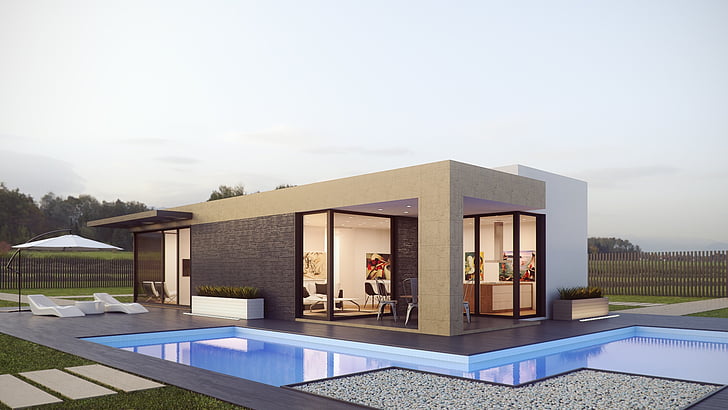
In the ever-evolving world of architecture and design, 3D architectural rendering has become an indispensable tool for bringing creative visions to life. Whether you’re an architect, interior designer, real estate developer, or simply someone looking to visualize a space, 3D rendering offers a powerful means of transforming concepts into captivating, realistic visuals. However, one crucial aspect that often comes to the forefront is the cost associated with 3D architectural rendering.
Understanding the Investment
Before delving into the specifics of the cost, it’s essential to recognize that 3D architectural rendering is an investment rather than an expense. When used effectively, it can yield substantial returns in terms of client satisfaction, project approvals, and marketing impact. The benefits of 3D rendering, including enhanced visualization and design refinement, often outweigh the initial financial outlay.
Factors Influencing Cost
The cost of 3D architectural rendering can vary significantly depending on several factors. It’s essential to consider these factors when budgeting for rendering services:
1. Project Complexity
The complexity of your architectural project plays a significant role in determining the cost of rendering. Intricate designs with detailed interiors, intricate exteriors, and complex landscaping will typically require more time and resources, thus increasing the cost.
2. Level of Detail
The level of detail you require in your 3D Architectural Rendering also impacts the cost. Highly detailed renders that include realistic textures, lighting, and intricate furnishings tend to be more expensive than simpler, less-detailed visualizations.
3. Number of Renders
Consider how many renders you need for your project. Some projects may require multiple views, such as interior and exterior perspectives, floor plans, and aerial views. Each additional render adds to the overall cost.
4. Software and Technology
The choice of 3D rendering software and technology can influence the cost. High-end software and advanced technology may come with higher licensing fees, which can be reflected in the rendering company’s pricing.
5. Timeframe
Urgency can affect the cost of 3D rendering. If you require a quick turnaround, some rendering companies may charge a premium for expedited services. Planning ahead and allowing sufficient time for the rendering process can help reduce costs in this regard.
6. Additional Services
Consider whether you need any supplementary services, such as animations, virtual reality tours, or post-production editing. These services, while adding value, will also contribute to the overall cost.
Pricing Models
3D architectural rendering companies typically offer different pricing models to accommodate various client needs. Here are a few common pricing structures:
1. Fixed Price
Some rendering companies provide a fixed-price model, where you pay a predetermined amount for a specified scope of work. This model offers clarity in terms of costs and is suitable for projects with well-defined requirements.
2. Per Render
In the per-render pricing model, you pay a fee for each individual rendering. This model is flexible, allowing you to control costs by selecting the specific number of renders you need.
3. Hourly Rate
Hourly rate pricing is based on the time spent on your project. It is commonly used for projects with evolving or less-defined scopes. However, it can be less predictable in terms of final costs.
Conclusion
In conclusion, the cost of 3D architectural rendering is a multifaceted consideration that should be approached with a clear understanding of your project’s needs and goals. While the investment in 3D rendering services is undeniable, it is crucial to weigh the benefits against the cost.
When budgeting for 3D rendering, take into account the complexity of your project, the level of detail required, the number of renders needed, the software and technology used, the timeframe, and any additional services. Be sure to choose a pricing model that aligns with your project’s scope and budgetary constraints.
Ultimately, 3D architectural rendering offers a valuable means of enhancing project visualization, design refinement, client satisfaction, and marketing impact. It is an investment that can elevate your architectural or design project to new heights, making it well worth the cost for those seeking to create compelling and realistic visualizations that leave a lasting impression.